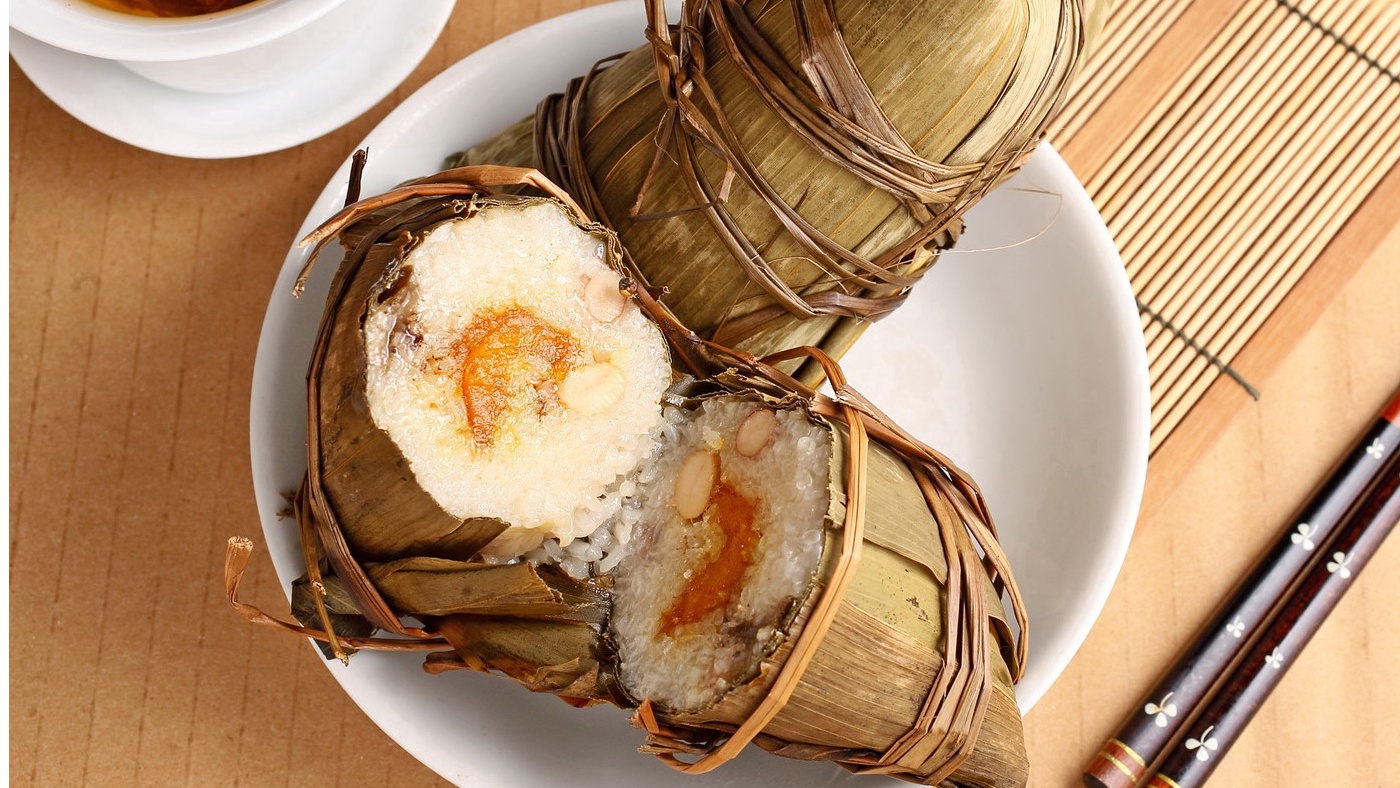
The zongzi is not just a snack with glutinous rice and delicious fillings, but a centerpiece of the Dragon Boat Festival in China.
The festival falls on the 5th day of the fifth lunar month (June 18 this year), which commemorates the legendary ancient Chinese poet Qu Yuan. The zongzi, or rice dumpling, also speaks to the tradition of home cooking in different places and regions.
The enormous variations for this time-honored favorite at home and abroad can certainly surprise you. Here are just several examples to titillate your taste buds.
The most famous – Jiaxing zongzi
Jiaxing zongzi, named after the city Jiaxing in east China's Zhejiang province, is the most sought-after kind of zongzi on the Chinese mainland during the Dragon Boat Festival thanks to the local time-honored brand Wu Fang Zhai, the largest zongzi manufacturer and retailer here. More than six million zongzi are reportedly distributed to its retail stores across the country per day in the most recent peak season.
In a triangular pyramid shape, Jiaxing zongzi is well known for its typical filling of marinated pork which is neither too salty nor too sweet, satisfying the palates of the majority. Sometimes it is also filled with sweet bean paste, lotus seed, longan fruit or peanut.
Fat meat, fried in oil after being boiled for several hours, is usually mixed in with the fillings, which makes the zongzi crispy but not greasy.
It is no exaggeration to say that Jiaxing is the hometown of zongzi as the delicacy almost appears on each family's menu year-around. In addition, Jiaxing owns the first and the only museum of zongzi.
The oldest – Xi'an zongzi
The "cold honey" zongzi has the longest history in the central Chinese city of Xi'an. This type of zongzi originated in the Tang Dynasty (618–907) according to ancient records, in which it is described as a food with a gorgeous jade-like appearance.
Made with cool glutinous rice, cold honey zongzi without fillings is a perfect choice during the sweltering summer as well as for dessert. Sliced into thin pieces and served on a plate, the delicate, carb-loaded dish will greatly delight your taste buds when eaten with honey or osmanthus fragrant syrup.
The largest – Nanning zongzi
Stuffed with fat and lean pork and peeled mung beans, each Nanning zongzi mostly weighs about one kilogram. It also called "pillow zong" due to its huge size and the middle part with fillings slightly higher than two sides.
Also in South China's Guangxi Zhuang autonomous region, people once made the largest zongzi containing 50-kilogram glutinous rice mixed with soybean sauce and roast pork, which can be eaten by a three-person family for two months.
The smallest – Shanghai zongzi
The smallest one sold at the City God Temple of Shanghai measures four centimeters long with ham as its filling and fits quite comfortably in the mouth. Some prefer to enjoy it with a cup of Chinese tea.
Some restaurants in Shanghai serve tiny zongzi barely larger than a person's finger. Fifty grams of glutinous rice and four little cubes of ham are wrapped up into a batch of four cute zongzi.
The most romantic – Hangzhou zongzi
In Tangxi ancient town in Hangzhou, East China's Zhejiang province, zongzi even has "gender," divided into "males" in the more common shape of a pyramid and "females" in a quadrangular pyramid. The latter is also nicknamed the "axe zong."
Aside from the shape, what's inside is another clue to the zongzi's gender. Male zongzi are usually stuffed with nothing or shredded lotus root whereas female ones are filled with red beans or meat. People in Tangxi town recall that zongzi actually served as gifts sent mutually that symbolize the beginning of a formal relationship among couples.
Boys with pyramid-shaped zongzi and girls with axe zong attended a party for blind dates, where the boy would give his zongzi to the one he falls in love with, and if he receives the girl's zongzi in return, a love story would blossom.
The most global – Hokkien zongzi
With Hokkien migrants across the world, Hokkien braised pork zongzi (also known as bakchang or machang originating from the Hokkien dialect), embracing fame at home and abroad, is very likely to be the most global one.
Braised pork zongzi is one of the most typical specialties in southeast Fujian province in East China, which is popular in Taiwan, as well as in Southeast Asian countries like Singapore, Malaysia and Indonesia.
The inside of the zongzi containing well-braised pork and extra fillings of mushrooms, dried shrimp or oyster and lotus seeds is the selling point. Wrapped with reed leaves and trussed with twine, the Hokkien version of zongzi has rich flavors thanks to the sticky rice, moist but not mushy, seasoned perfectly with broth after being steamed.
With Hokkien migrants across the world, Hokkien braised pork zongzi (also known as bakchang or machang originating from the Hokkien dialect), embracing fame at home and abroad, is very likely to be the most global one.
Braised pork zongzi is one of the most typical specialties in southeast Fujian province in East China, which is popular in Taiwan, as well as in Southeast Asian countries like Singapore, Malaysia and Indonesia.
The inside of the zongzi containing well-braised pork and extra fillings of mushrooms, dried shrimp or oyster and lotus seeds is the selling point. Wrapped with reed leaves and trussed with twine, the Hokkien version of zongzi has rich flavors thanks to the sticky rice, moist but not mushy, seasoned perfectly with broth after being steamed.



